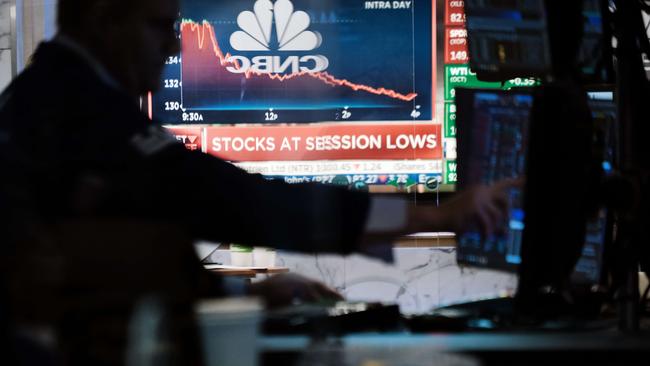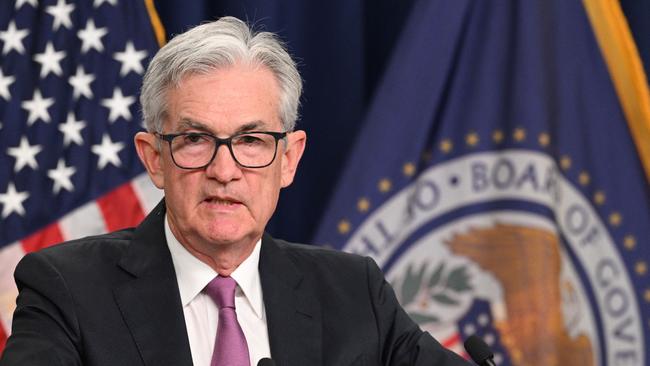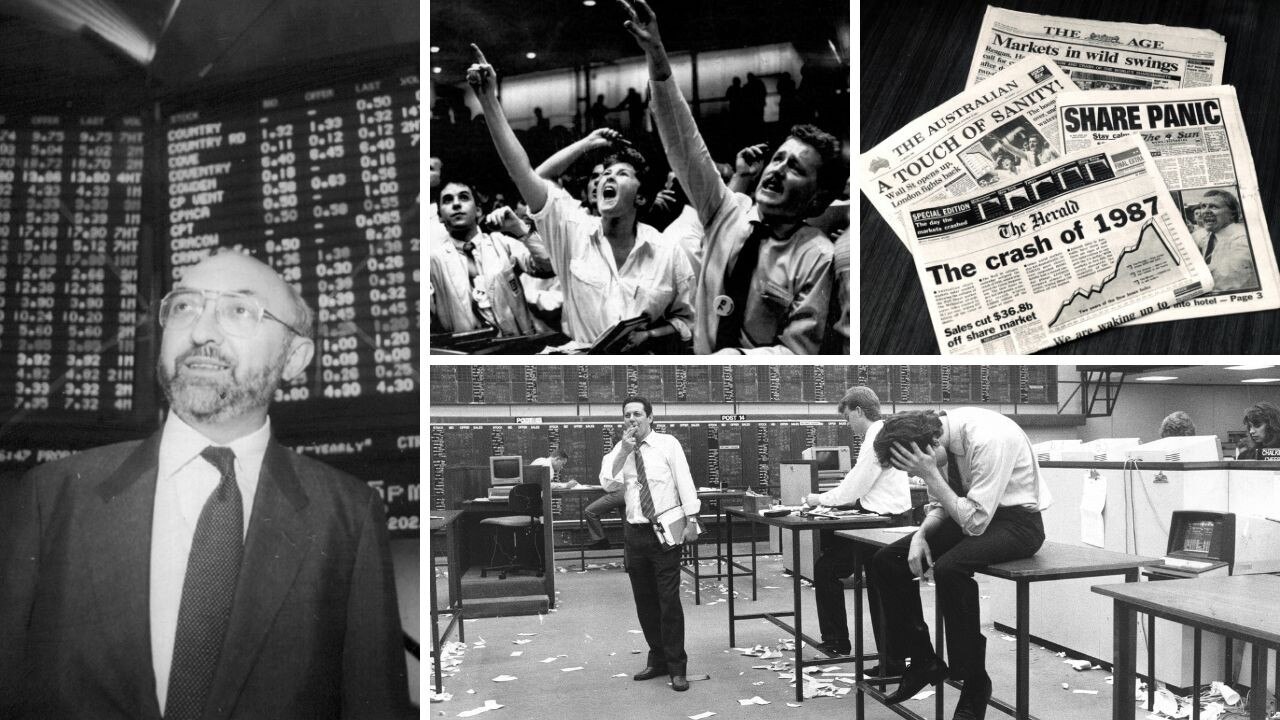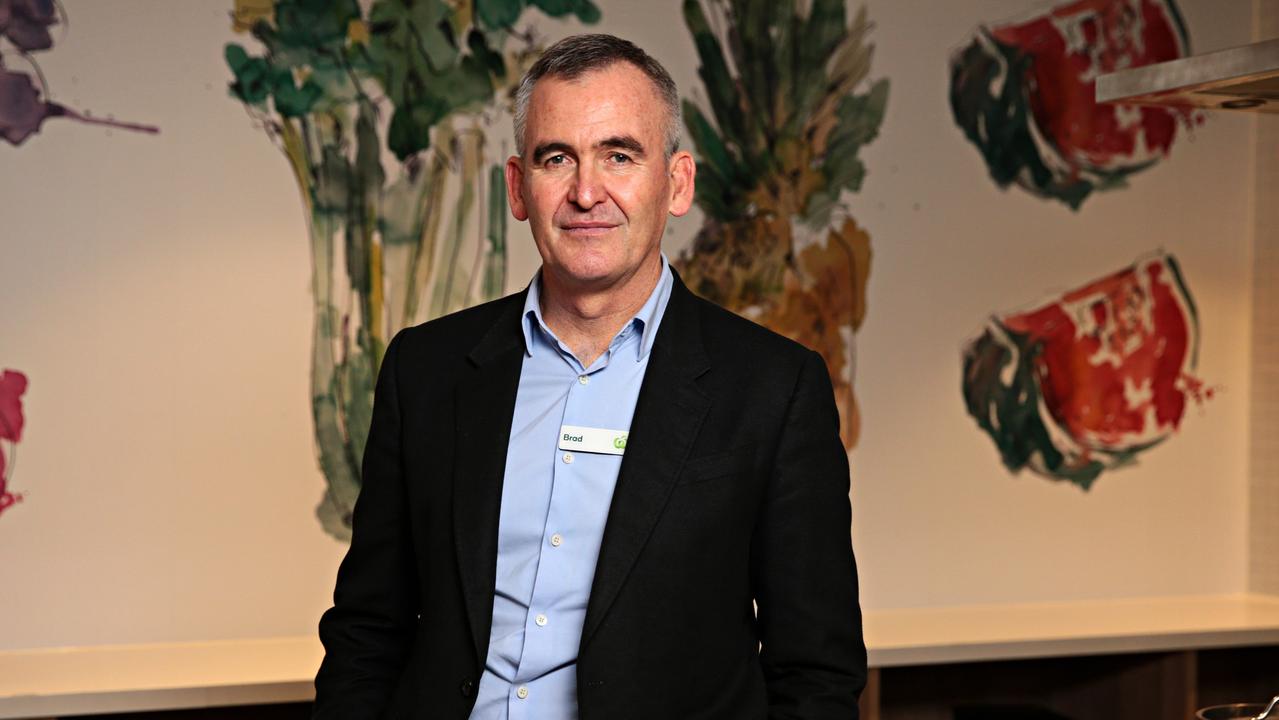Jerome Powell and US Federal Reserve barking at markets without biting
The rest of everyone’s investment future started early Saturday morning our time with the speech from Fed head Jerome Powell that sent Wall St plunging.

Terry McCrann
Don't miss out on the headlines from Terry McCrann. Followed categories will be added to My News.
The rest of everyone’s investment future started early Saturday morning our time with the speech from Fed head Jerome Powell that sent Wall St plunging.
When the dust had settled and Wall St traders headed shakily to the weekend, the Dow had gone down just over 1000 points, or 3 per cent – it’s biggest daily drop since May.
The tech-heavy Nasdaq Index was down 4 per cent. High octane stocks like Meta (Facebook) and Amazon got whacked. Bitcoin headed back towards $US20k ($29k).
Now, Powell seemed to give the sort of speech that traders did not expect and most certainly did not want to hear.
He seemed to say the Fed would do ‘whatever it takes’- as in, raising interest rates – to tame US inflation.
The smarter among observers would have noted that because the Biden administration had just embarked on a massively inflationary new spending program – laughingly and grotesquely called the “Inflation Reduction Act” – that had to mean US interest rates going even higher than previously anticipated or feared.
The legislation’s title is so obviously laughable, as it splashes ‘free’ money around like Americans have hardly seen, that even the administration and Democrats in Congress have taken to avoiding using the name.
So, was Powell really signalling more ‘slash and burn’ big interest rate rises, starting with the next Fed meeting on September 21?
I remain utterly unconvinced. He was in my judgment engaged in – rather desperately – reversing the famous bit of advice from former US president Teddy – not FDR – Roosevelt.
Teddy’s advice was to “speak softly and carry a big stick”.
Powell is trying to “speak loudly and carry a small stick”.
Powell said getting inflation down “would take some time”, that the Fed would act “forcefully”; and “we must keep at it until the job is done”.
That and more was all “speaking loudly”.

And he might have seemed to have wielded the “big stick” with the Fed’s two 75-point official rate rises at its last two meetings in June and July.
But on Wednesday, ahead of his big speech at the Fed’s annual Jackson Hole get-together in Wyoming, he seemed to deliberately and explicitly rule out any more 75-pointers.
Powell said Wednesday that future rate hikes larger than 50 basis points were “not something the Fed is actively considering”.
At best there’s a bit of mixed messaging between Wednesday and Friday. Wall St went up after Wednesday – continuing its strong recovery from June to be up nearly 15 per cent over the two months.
This had dragged our market up 11 per cent from its June low-point. Ahead of, of course, what happens on Monday.
Now, if only the messaging was clear-cut and could be believed, there would be a clear – and yes, unpleasant, but nevertheless clear – investment horizon. Most directly for shares, but also property.
But exactly as we’ve seen over the last few months, not only is the messaging – and the actual delivery of rate rises – murky; we also have to factor in the ‘dancing’ that takes place between Wall St and the Fed.
Broadly, the Fed signals it is going to get tough, it is going to hike rates, maybe even do “whatever it takes”.
Wall St throws a tantrum, trying to convince the Fed that “the cure – higher rates – is worse than the disease – inflation”.
And knowing, knowing, the Fed will respond.
It always has in the past – most spectacularly after the GFC, when it first slashed rates to zero and started its multi-trillion-dollar money printing that sent share and property prices soaring.
And not just in America. The reason we’ve got million-dollar properties scattered through our major capital cities is a direct consequence of what the Fed has been doing since 2008.
So what the Fed does – and just as importantly, does not – do in coming months, indeed years, plays directly into not just where our share market goes but our property market as well.
Even though that impact gets “mediated’’ through what our Reserve Bank does with its own official rate and the flow-through to bank home loan rates.
The impossibility of sensible prediction is a cocktail of two things.
The first is that whole Fed-Wall St interplay.
The second is that the whole world has changed around it.
The entire European continent has got existential problems with energy built on inflation much higher than in the US or indeed in Australia.
The Chinese growth miracle that has underwritten the global economies and even more dramatically our own since 2000 is teetering if not collapsing. With its zero-Covid policy coming on top.
And then we’ve got our own issues – inflation, rising rates, the Covid hangover, in spades, etc etc – and a government embarked on rapid energy suicide.
It’s at best a ‘volatile mix’.



